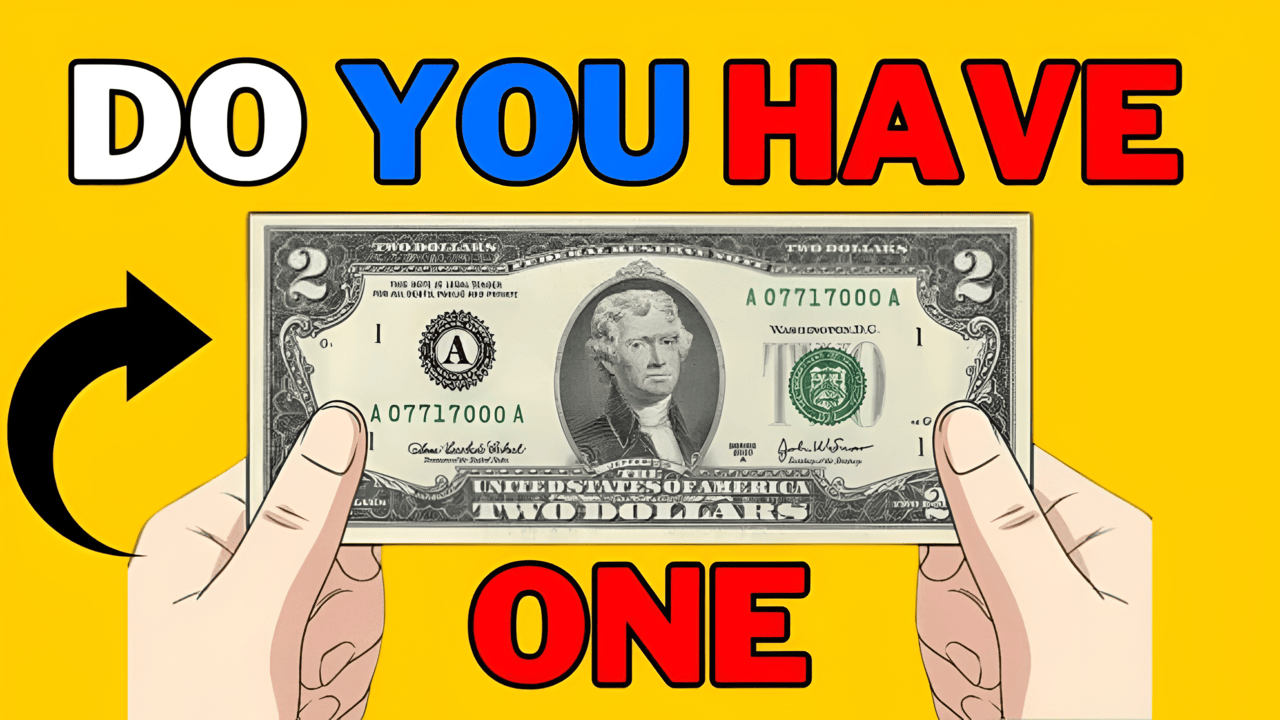Discover the $65,000 Star Note: Could You Be Holding a Fortune?
Imagine this: You’re sifting through your wallet or maybe going through an old box of keepsakes, and suddenly, you spot a $2 bill. It looks normal at first, but then you notice something unusual—a small star symbol next to its serial number. You shrug, thinking it’s nothing special. But what if I told you that tiny star could turn that bill into a ticket to a small fortune? That’s exactly what happened to a woman in Florida, whose old $2 bill ended up selling for a whopping $65,000! Let’s break down this fascinating story and help you figure out if you could be holding a hidden treasure too.
What Is a Star Note?
In simple terms, a star note is a replacement bill. When a U.S. paper currency gets damaged or misprinted at the Bureau of Engraving and Printing (BEP), they don’t just reprint the same serial number. Instead, they print a new bill with a fresh serial number and add a star (★) at the end. This is how star notes are born.
Star notes are printed in all common denominations—$1, $2, $5, $10, $20, $50, and $100. But what makes them interesting is that they are produced in much smaller numbers compared to regular bills. Because of this, some star notes are rare, and collectors are always on the lookout for them.
Why Are Star Notes So Valuable?
The value of a star note comes down to a mix of rarity, condition, and serial number uniqueness.
-
Rarity: Star notes are printed in smaller batches. Some print runs are under 100,000, compared to millions for regular bills. The smaller the print run, the rarer the note.
-
Serial Number: Collectors love notes with special serial numbers. Low serial numbers like 00000001 or patterns like 12345678 or 22222222 can make a star note even more desirable.
-
Condition: A crisp, uncirculated star note with no folds, tears, or stains can fetch a much higher price than one that’s been in someone’s wallet for years.
The $65,000 Star Note Story
Here’s where things get exciting. In 2025, a woman in Florida found an old $2 bill while going through her late grandmother’s belongings. What caught her attention was the little star next to the serial number. Curious, she had it checked by a currency expert.
It turned out that she had a rare 1928 $2 star note from a very limited print run—less than 100,000 produced. Even better, the note was in excellent condition, having been stored safely all those years. When it went to auction, collectors went wild, and the note ended up selling for an eye-popping $65,000!
How to Check If You Have a Valuable Star Note
Feeling hopeful? It’s easy to check your bills! Here’s what to do:
✅ Look for the star – Check the end of the serial number for a little ★ symbol.
✅ Check the series year – Older notes, especially pre-1950s, tend to be rarer. The series year is printed on the front of the note.
✅ Look at the serial number – Fancy patterns or very low numbers add value.
✅ Check the condition – A bill that’s crisp and clean will be worth more.
✅ Use online tools – Websites like MyCurrencyCollection.com or StarNoteLookup.com can tell you how rare your note is once you enter the serial number, denomination, and year.
Quick Reference: Star Note Values
| Denomination | Series Year | Print Run | Estimated Value (Uncirculated) |
|---|---|---|---|
| $2 | 1928 | <100,000 | $10,000 – $65,000 |
| $5 | 1934 | 320,000 | $500 – $60,000 |
| $1 | 2017 | 640,000 | $10 – $50 |
| $100 | 1969 | 200,000 | $1,000 – $5,000 |
Note: Actual value depends on condition, demand, and serial number type.
Where Can You Sell Your Star Note?
If you find a star note that looks promising, don’t just spend it at the grocery store!
👉 Online platforms like eBay or Whatnot are popular places where collectors search for rare currency.
👉 Currency dealers and local coin shops can give you an expert appraisal.
👉 Auction houses specializing in coins and currency are ideal for very rare notes.
Before selling, it’s smart to double-check your bill’s details on trusted websites like USPaperMoney.info to confirm authenticity and rarity.
Final Thoughts
The amazing story of the $65,000 star note shows how sometimes, a small detail can make all the difference. What seems like just another bill in your wallet could turn out to be worth thousands. So next time you’re handling cash, take an extra moment to check for that star symbol. Who knows? That small star could lead to a big fortune!

